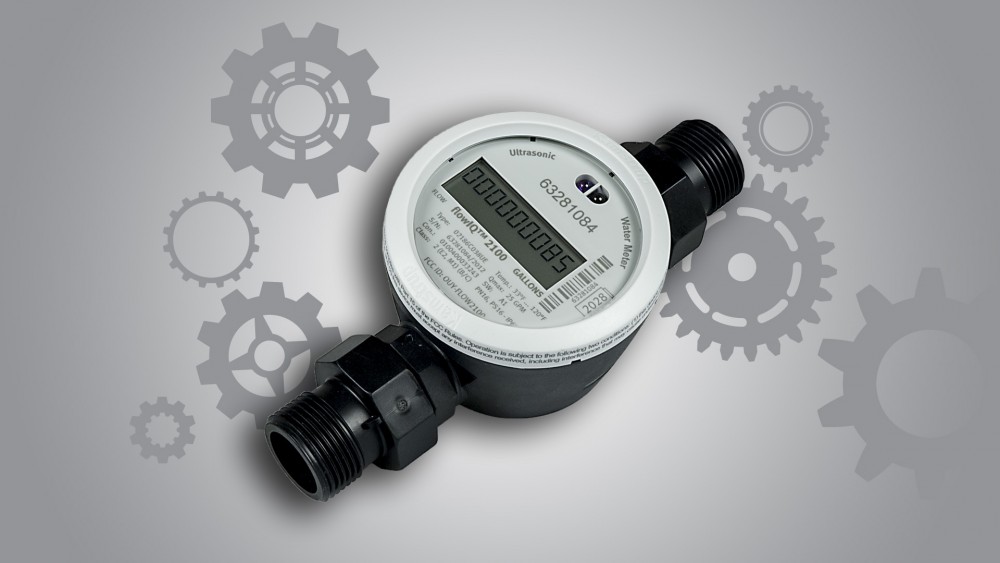Often in times of innovation, we as a society face unintended consequences. One that has held our attention for quite some time is the presence of per- and polyfluoroalkyl substances (PFAS) in our water sources. PFAS are commonly found in everyday products and have made their way into our water supplies, posing a significant threat to public health.
In the ongoing battle against PFAS, water utilities have found themselves on the front lines, battling mitigation efforts, a lack of funding, and a complex web of responsibilities.
Understanding PFAS
PFAS are manufactured compounds that are characterized by their strong carbon-fluorine bonds, making them resistant to heat, water, and oil. (So right off the bat we know that we don’t want these anywhere near our water supply.) While these properties have led to widespread use in manufacturing, they have also led to contamination in our water supplies thanks to industrial discharges, firefighting activities, and the destruction of consumer products.
Despite being in use for the past eight decades, these synthetic toxins are still categorized as emerging contaminants. For context, emerging contaminants are grouped into eight main categories: pharmaceuticals, PCPs, hormones and steroids, disinfectants, flame retardants, herbicides and pesticides, industrial additives, and gasoline additives.
This classification represents the lack of necessary regulatory limits for how much of these compounds can legally be in public drinking water. Since it is virtually impossible to destroy them (and it can be even harder to completely avoid them), the possibility of producing adverse side effects over time is high, with the potential to cause severe complications in both the environment and within the human body.
So, where can PFAS most commonly be found today?
- Soil, water, and/or PFAS-containing equipment and materials from PFAS-grown agricultural products.
- Drinking polluted groundwater from stormwater runoff near landfills, wastewater treatment plants, and firefighter training facilities.
- Household items such as nonstick products (e.g., Teflon), polishes, waxes, paints, cleaning agents, and fabrics with stain and water repellency.
- Firefighting foams expelled at airports and military bases during firefighting exercises.
- Industrial facilities that utilize PFAS when manufacturing chrome plating, electronics, and oil recovery.
Mitigation Efforts
The role water utilities play in mitigating PFAS contamination simply cannot be overstated. In order to protect the community from contamination, utilities require a robust toolbelt: a combination of advanced technologies, vigorous monitoring and reporting systems, and extensive regulatory frameworks.
There’s also the option for more advanced treatment technologies, like activated carbon filtration and ion exchange, that can be used when trying to eliminate these toxic, persistent substances. Activated carbon filtration is when water passes through a bed of activated carbon particles that aid in absorbing PFAS contaminants. Ion exchange is another similar method that instead replaces the PFAS ions with less harmful ones, helping to reduce contamination levels.
Utilities take it one step further by conducting routine monitoring and testing at the sources, as it is crucial to being able to identify contamination early on and act fast. Combined with ongoing research, utilities are able to keep themselves on top of their mitigation practices and existing technologies.
Funding Difficulties
Now, we know that water utilities receive very limited funding and are the ones left behind to clean up the mess (pun intended). While grants can be incredibly helpful, they’re not guaranteed and can be far and few between.
In the summer of 2022, the Environmental Protection Agency (EPA) introduced new health advisories related to PFAS contamination in public drinking water. This act aligned with President Biden’s initiative to provide clean drinking water to the American people, alongside an initial $1 billion grant, which was part of a larger $5 billion initiative. The grant was extended nationwide and was designated for comprehensive water testing, technical support, contractor training, and other essential action items. In addition, President Biden’s Bipartisan Infrastructure Law invests $9 billion over five years to help communities that are on the frontlines of PFAS and other contamination reduce levels in drinking water.
However, $1–9 billion simply won’t cut it.
The insufficient amount is hardly enough to supply testing on a national scale, a necessary feat in rectifying almost 100 years of damage from PFAS contamination. Water utilities are then forced in between a rock and a hard place, leaving them with limited funds and ill-equipped to fix the contaminated waterways. The responsibility, unfortunately, falls onto utilities, when in reality, it should fall on the corporations that originally introduced PFAS, given the years of profiting from these compounds.
We’ve entered a time where it is now up to these corporations to contribute to the cleanup of our land and water, especially considering that public water systems are often the ones burdened with the financial repercussions.
Role of Manufacturers
Manufacturers, who have historically utilized PFAS in their products, play a significant role in addressing the contamination crisis. Even while advancements in alternative chemicals are currently underway, the responsibility to rectify the issue should really fall on to those who have played a hand in its creation. (Essentially, you break it, you buy it!)
As we know, the costs of detecting, treating, and preventing PFAS contamination place a hefty burden on water utilities. Manufacturers can help alleviate this financial strain. And besides, if manufacturers can express transparent acknowledgment of their past actions and make a full commitment to not only rectifying their wrongdoings but fronting the bills, it would build trust among the consumers and communities affected, making it some sort of a win-win.
Conclusion
In the face of PFAS contamination, knowledge is indeed power. Water utilities are armed with an understanding of the issue and have accepted their mission as the bodyguards of public health.
However, the challenges they face, including a lack of proper funding and the need for cooperation from manufacturers, often put a spotlight on the complexity of the issue. It is crucial for us as a society to recognize the shared responsibility in addressing PFAS contamination, making the intentional effort towards collaboration between stakeholders to make sure the burden does not disproportionately fall on those working diligently to provide safe and clean water to communities.
Through collective efforts and informed decision-making, we can pave the way for a sustainable and PFAS-free future.







 Even more, the philanthropic spirit within ESOPs often extends far beyond the workplace and into the broader community. As employees witness the positive impact of their collective efforts, a culture of giving back often emerges, with many ESOP companies actively engaging in community service, charitable initiatives, and support for local causes. The idea of shared ownership naturally paves the way to a shared responsibility for the well-being of the community at large, embodying a model of corporate philanthropy that goes beyond just monetary donations.
Even more, the philanthropic spirit within ESOPs often extends far beyond the workplace and into the broader community. As employees witness the positive impact of their collective efforts, a culture of giving back often emerges, with many ESOP companies actively engaging in community service, charitable initiatives, and support for local causes. The idea of shared ownership naturally paves the way to a shared responsibility for the well-being of the community at large, embodying a model of corporate philanthropy that goes beyond just monetary donations.
 October was
October was  Each day brings a new set of challenges, creating a dynamic and engaging work environment that offers employees the opportunities to not only lean back on their past experiences, but also learn new skills and provide a “new set of eyes” when interacting with said challenges. These multifaceted roles not only broaden the team’s skillset but also provide a more holistic perspective, inspiring creative and innovative problem-solving, whereas larger corporations and firms may experience more constraints.
Each day brings a new set of challenges, creating a dynamic and engaging work environment that offers employees the opportunities to not only lean back on their past experiences, but also learn new skills and provide a “new set of eyes” when interacting with said challenges. These multifaceted roles not only broaden the team’s skillset but also provide a more holistic perspective, inspiring creative and innovative problem-solving, whereas larger corporations and firms may experience more constraints. With a small firm, direct communication with decision-makers is not only a hallmark, but it also ensures clients that they are more than just another transaction; they are in fact valued partners. This kind of intentional accessibility allows both firm and client to foster a deep understanding of each other’s needs and preferences, making way for service with a level of laser precision that can often go far beyond the standardized solutions larger firms offer.
With a small firm, direct communication with decision-makers is not only a hallmark, but it also ensures clients that they are more than just another transaction; they are in fact valued partners. This kind of intentional accessibility allows both firm and client to foster a deep understanding of each other’s needs and preferences, making way for service with a level of laser precision that can often go far beyond the standardized solutions larger firms offer. Small firms can afford to be more flexible, allowing themselves to work around and cater to the specific needs of each client, tailoring services to meet these individual requirements. Unlike larger corporations that may offer standardized solutions at a premium, small firms can provide these services at a more affordable rate.
Small firms can afford to be more flexible, allowing themselves to work around and cater to the specific needs of each client, tailoring services to meet these individual requirements. Unlike larger corporations that may offer standardized solutions at a premium, small firms can provide these services at a more affordable rate. In addition, Tata & Howard co-founder Paul Howard, P.E. was presented with an Honorary Member Award for his decades of selfless contributions to the water sector. He was presented the award alongside longtime client Phil Guerin from the City of Worcester, who was also given an Honorary Membership.
In addition, Tata & Howard co-founder Paul Howard, P.E. was presented with an Honorary Member Award for his decades of selfless contributions to the water sector. He was presented the award alongside longtime client Phil Guerin from the City of Worcester, who was also given an Honorary Membership. Finally, T&H Vice President Jon Gregory, P.E. was elected Third Trustee of MWWA, meaning he will advance to MWWA President in five years. Congratulations to all!
Finally, T&H Vice President Jon Gregory, P.E. was elected Third Trustee of MWWA, meaning he will advance to MWWA President in five years. Congratulations to all!
 The first week of the month saw the start of our month-long food drive to the
The first week of the month saw the start of our month-long food drive to the  Every Tuesday this October, the T&H crew will break out into teams for the month-long Family Feud competition. We even have our very own Steve Harvey! (pictured below). Not only will the weekly competition serve as a sure-fire cure for any lingering post-Monday blues, it will also foster friendly competition, a sense of togetherness, communication, and of course, a lot of laughter and light hearted entertainment! The competition started on October 3 and the final round will be held on October 24.
Every Tuesday this October, the T&H crew will break out into teams for the month-long Family Feud competition. We even have our very own Steve Harvey! (pictured below). Not only will the weekly competition serve as a sure-fire cure for any lingering post-Monday blues, it will also foster friendly competition, a sense of togetherness, communication, and of course, a lot of laughter and light hearted entertainment! The competition started on October 3 and the final round will be held on October 24. As we cannot seem to get enough friendly competition, our team brought their A-game at October 12’s Level 99 event.
As we cannot seem to get enough friendly competition, our team brought their A-game at October 12’s Level 99 event.  On October 19, 2023, T&H turned 31 years old, so cue the “happy birthday” song! We were founded on October 19, 1992 by Donald J. Tata and Paul B. Howard. This exciting anniversary was celebrated by a company-wide catered lunch where we also discussed important company initiatives. Once the business portion of the day was completed, it was time for the party to start. The company hosted a premiere of both our new website (click around and check it out!) and new
On October 19, 2023, T&H turned 31 years old, so cue the “happy birthday” song! We were founded on October 19, 1992 by Donald J. Tata and Paul B. Howard. This exciting anniversary was celebrated by a company-wide catered lunch where we also discussed important company initiatives. Once the business portion of the day was completed, it was time for the party to start. The company hosted a premiere of both our new website (click around and check it out!) and new 


 AMR and AMI: What’s the Difference?
AMR and AMI: What’s the Difference?

 Tata & Howard presented the Donald J. Tata Engineering Scholarship Award to two deserving high school seniors this spring: Bennett Sonneborn from Natick High School and Emma Devens from Marlborough High School. Both are pursuing engineering degrees and exhibited not only exemplary GPA and grades in their classes, but were also involved in extracurricular activites and philanthropic initiatives. We had so much fun presenting them their big checks, and we wish them all the best on their college journeys. In the fall, Bennett is attending New York University and Emma is attending the Rochester Institute of Technology.
Tata & Howard presented the Donald J. Tata Engineering Scholarship Award to two deserving high school seniors this spring: Bennett Sonneborn from Natick High School and Emma Devens from Marlborough High School. Both are pursuing engineering degrees and exhibited not only exemplary GPA and grades in their classes, but were also involved in extracurricular activites and philanthropic initiatives. We had so much fun presenting them their big checks, and we wish them all the best on their college journeys. In the fall, Bennett is attending New York University and Emma is attending the Rochester Institute of Technology.